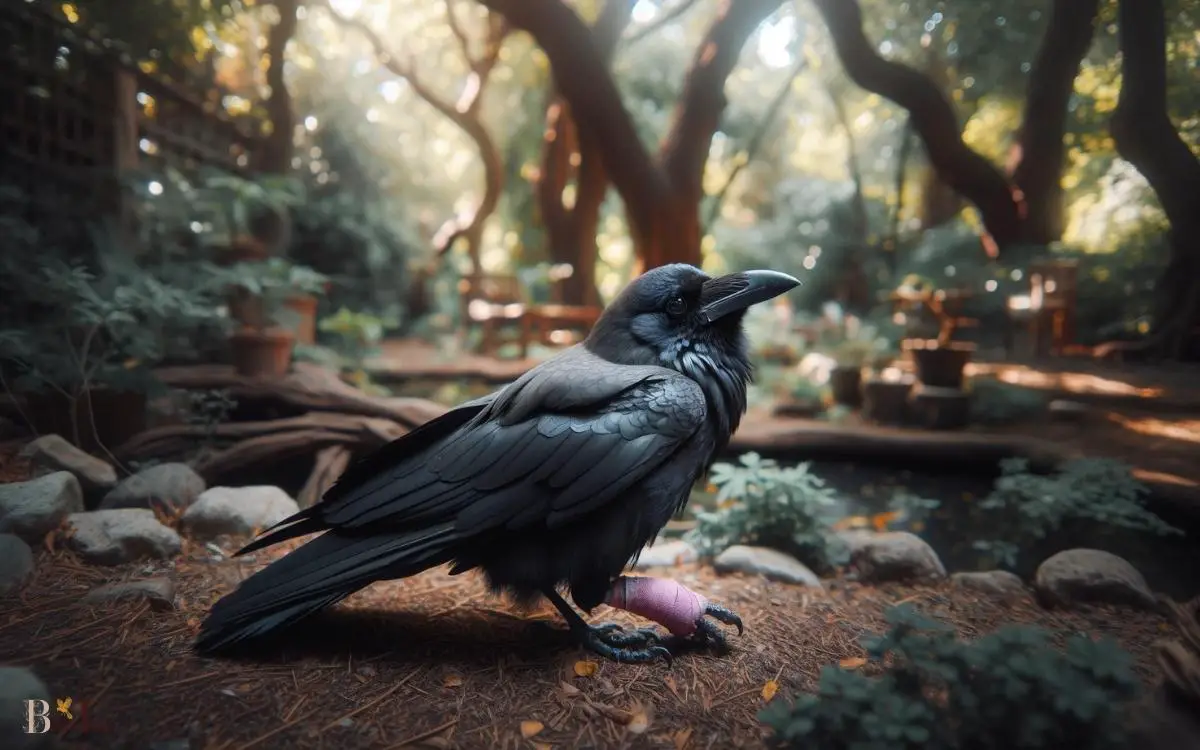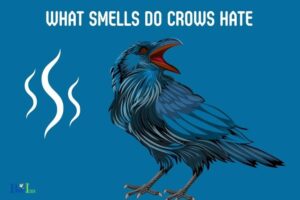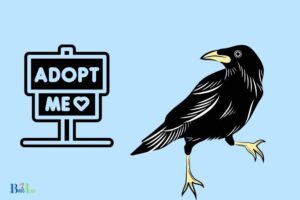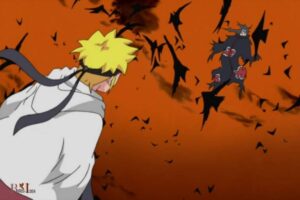Crow With Broken Wing What to Do? A Guide!
If you find a crow with a broken wing, take immediate action to aid its recovery. Begin by calmly assessing the situation to avoid causing further stress to the bird.
Create a quiet, dark, and safe environment for the crow. Contact a local wildlife rehabilitator or veterinarian for professional assistance.
If you’re advised to transport the crow, gently capture it using a towel or blanket, and place it in a well-ventilated box.
Provide care as instructed by the professional until it can be safely transported for proper treatment. Never attempt to feed or water the crow without advice from a professional.
When you come across a crow with a broken wing, it’s crucial to handle the situation delicate care:
- Assess the Crow’s Condition: Look for signs of injury or distress without touching the bird.
- Create a Safe Environment: A quiet, dark space can help reduce the crow’s stress.
- Contact Wildlife Rehabilitation: They are trained to deal with injured wildlife and can provide specific instructions.
- Capture the Injured Crow Safely: Use a towel to gently wrap the crow, avoiding further harm.
- Provide Temporary Care: Keep the bird in a ventilated box and follow the guidelines given by the wildlife professional.
- Transport to Safety: Take the crow to the nearest rehabilitation center or veterinarian as soon as possible.
When helping a crow in distress, remember that your kindness can make a significant difference in its chance for a successful recovery.
Act with compassion and follow expert guidance to ensure the best possible outcome for the injured bird.

Key Takeaway
Assessing the Crow’s Condition
Upon discovering a crow with a suspected broken wing, carefully observe the bird’s behavior and physical condition to assess the severity of its injury.
Approach the crow calmly, avoiding sudden movements that could startle or stress the bird further.
Look for signs of distress, such as the inability to fly, holding the wing at an awkward angle, or visible wounds.
Take note of the crow’s general demeanor and any signs of pain or discomfort. Assessing the bird’s condition will help determine the best course of action to ensure its well-being.
Once you have evaluated the crow’s condition, the next step is to create a safe environment to provide the necessary care and support for the injured bird.
Creating a Safe Environment
To provide optimal care for a crow with a broken wing, it is essential to create a safe and secure environment for the injured bird.
Start by placing the crow in a quiet, enclosed space to minimize stress and prevent further injury.
Ensure that the area is free from potential hazards such as sharp objects, toxic substances, or other animals that could cause harm.
Provide a comfortable and warm nesting area with soft padding to support the crow’s injured wing and allow it to rest.
Ensure access to fresh water and appropriate food to support the crow’s recovery. Limit human interaction to minimize stress and allow the crow to heal undisturbed.
Contacting Wildlife Rehabilitation
First, contact a wildlife rehabilitation center to seek professional assistance for the crow with a broken wing.
- Locate a reputable wildlife rehabilitation center in your area.
- Call the center to inform them about the injured crow and inquire about their intake process.
- Follow any instructions provided by the rehabilitation center for safely transporting the crow to their facility.
- Be prepared to provide details about the crow’s condition and location to the rehabilitation center staff.
Once you have contacted the wildlife rehabilitation center and received guidance on how to proceed, you can then focus on safely capturing the injured crow.
Safely Capturing the Injured Crow
After contacting the wildlife rehabilitation center and receiving guidance on the intake process, it is important to safely capture the injured crow for transportation to the facility.
Approach the crow calmly and quietly to avoid causing further distress. Use a towel or blanket to cover the crow gently, ensuring that its wings are secured against its body to prevent further injury or escape.
Carefully lift the crow and place it in a well-ventilated and secure container, such as a cardboard box with air holes.
Avoid prolonged eye contact and sudden movements to minimize stress on the bird. It’s crucial to handle the crow with care and respect, recognizing its need for freedom.
Once the bird is safely contained, transport it to the wildlife rehabilitation center as soon as possible for professional care.
Providing Temporary Care
In providing temporary care for a crow with a broken wing, it is crucial to create a safe and secure environment for the injured bird.
Seeking professional help from a wildlife rehabilitator or a veterinarian is essential to ensure the crow receives the appropriate care.
Providing basic necessities such as food, water, and shelter will help support the crow’s recovery during this temporary period.
Creating Safe Environment
To provide temporary care for a crow with a broken wing, it is essential to create a safe and secure environment.
Here are some key steps to ensure the safety and well-being of the injured crow:
- Secure Enclosure: Set up a spacious and secure enclosure to prevent further injury and provide a safe space for the crow to rest and recover.
- Soft Bedding: Line the enclosure with soft, clean bedding to offer comfort and prevent any additional harm to the injured wing.
- Fresh Water and Food: Ensure access to fresh water and suitable bird food to support the crow’s nutritional needs during its recovery.
- Protection from Predators: Place the enclosure in a location that is safe from predators to minimize stress and potential harm to the injured crow.
Seeking Professional Help
A critical step in providing temporary care for a crow with a broken wing is to promptly seek the assistance of a qualified wildlife rehabilitator.
These professionals have the expertise and resources to provide the necessary care and treatment for the injured crow.
Here is a table outlining the steps to take when seeking professional help for the injured crow:
| Step | Action |
|---|---|
| 1 | Locate a qualified rehabilitator |
| 2 | Contact the rehabilitator |
| 3 | Follow their guidance |
| 4 | Transport the crow safely |
| 5 | Provide necessary information |
Seeking professional help ensures that the crow receives the appropriate care and increases its chances of recovery. It is essential to act swiftly and responsibly in providing temporary care for the injured bird.
Providing Basic Necessities
After seeking professional help for the injured crow, provide the necessary basic necessities for its temporary care. This will help ensure the crow’s wellbeing and aid in its recovery.
Here are some essential items to consider:
- Shelter: Provide a safe and comfortable enclosure to protect the crow from harsh weather conditions.
- Food and Water: Offer a varied diet including seeds, fruits, and insects, and ensure a supply of fresh water.
- Clean Bedding: Maintain a clean and dry environment by regularly changing the bedding material in the enclosure.
- Quiet Environment: Minimize stress by placing the enclosure in a quiet area away from loud noises and disturbances.
Transporting the Crow to Safety
Upon discovering a crow with a broken wing, carefully use a sturdy box or crate to transport the bird to a wildlife rehabilitation center for immediate care.
Approach the crow calmly, and gently place the box over the bird, ensuring that it has enough space to stand without further injuring itself.
Once the crow is inside the box, secure the lid to prevent escape or further injury during transportation.Keep the box in a quiet, warm, and dark environment to minimize stress on the crow.
It’s crucial to transport the crow to a wildlife rehabilitation center as soon as possible, as they have the expertise and resources to provide the necessary medical treatment and rehabilitation for the bird’s specific injury.
Remember that the ultimate goal is to ensure the crow’s recovery and eventual release back into the wild.
Supporting the Crow’s Recovery
Now that the crow has been transported to safety, the next step is to focus on supporting its recovery.
This involves providing proper care for its broken wing and seeking professional help from a veterinarian or wildlife rehabilitator.
Providing Proper Care
Once the crow with the broken wing has been stabilized, it is essential to provide proper care to support its recovery.
To ensure the crow’s well-being and aid its healing process, consider the following steps:
- Create a calm and quiet environment to reduce stress and allow for rest.
- Offer a suitable diet including seeds, fruits, and insects to support the crow’s nutritional needs.
- Keep the crow’s enclosure clean and dry to prevent infection and promote healing.
- Monitor the crow’s progress and behavior closely, seeking professional veterinary care if necessary.
Seeking Professional Help
After stabilizing the crow and providing proper care, it is imperative to seek professional help to support the bird’s recovery from its broken wing.
- A wildlife rehabilitator or avian veterinarian should be contacted as soon as possible.
- These professionals have the expertise and resources to assess the severity of the injury and provide the necessary treatment.
- They can offer specialized care, such as splinting the wing, administering medication, and designing a rehabilitation plan tailored to the crow’s needs.
- They can monitor the bird’s progress and make adjustments to the treatment plan as needed.
Seeking professional help is crucial in ensuring the crow has the best chance of recovering and eventually returning to the wild.
It is important to act swiftly and decisively to give the crow the best possible chance at a full recovery.
Conclusion
It is crucial to provide immediate care for a crow with a broken wing. By creating a safe environment and contacting wildlife rehabilitation, the injured crow can receive the necessary support for its recovery.
Safely capturing and transporting the crow to safety will ensure that it receives the proper care it needs.
With dedicated attention and assistance, the crow’s injured wing can heal, allowing it to soar once again in the open skies.






